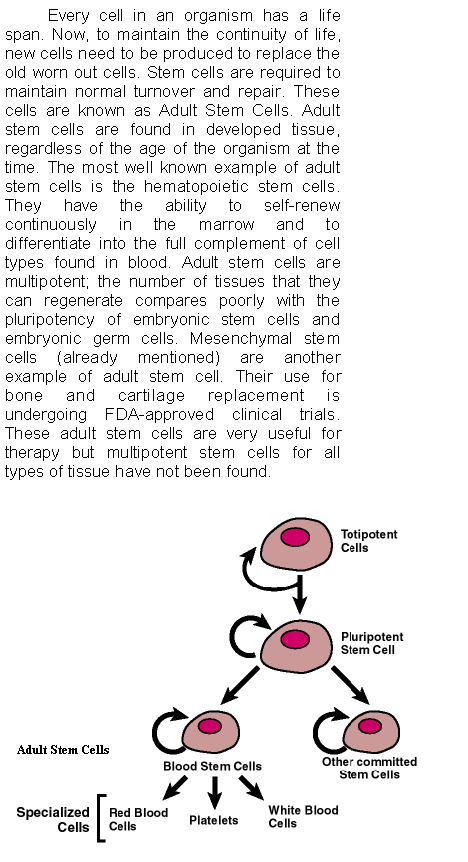




|
The stem cells also have the ability to differentiate into cell types beyond those of the tissue in which they normally reside. This characteristic property of stem cells is known as plasticity. Here is a recent experimental account demonstrating plasticity. In a report in New Scientist, Freda Miller and her colleagues at McGill University in Montreal have managed to retrieve stem cells from skin. They found that the cells could differentiate into a variety of cell types, including neurons, smooth muscle cells and fat cells. In a follow-up experiment, they showed that human skin also contains stem cells that can develop into neurons. |
||